The Grumman G-118 was a design for an all-weather missile-armed interceptor aircraft for use on US Navy aircraft carriers. Originally conceived as an uprated F11F Tiger, it soon evolved into a larger and more powerful project. Although two prototypes were ordered in 1955, development was cancelled the same year in favor of the F4H Phantom II before any examples were built. Grumman's next carrier fighter would be the F-14 Tomcat, ordered in 1968.

The North American P-64 was the designation assigned by the United States Army Air Corps (USAAC) to the North American Aviation NA-68 fighter, an upgraded variant of the NA-50 developed during the late 1930s. Seven NA-50s were purchased by the Peruvian Air Force, which nicknamed it Torito.

The General Aviation XFA was an American biplane fighter aircraft built by the General Aviation Company for the United States Navy.

The Boeing XF6B-1 / XBFB-1 was Boeing's last biplane design for the United States Navy. Only the one prototype, Model 236, was ever built; although first flying in early 1933, it rammed into a crash barrier in 1936 and the design was not pursued further.

The Boeing XP-15 was an American prototype monoplane fighter.
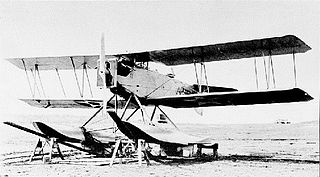
The Aeromarine AS was a seaplane fighter aircraft evaluated by the US Navy in the early 1920s.

The Aviatik B.I is a German two-seat reconnaissance biplane designed and built by the Automobil und Aviatik AG company, who until then had produced copies of French designs.

The IMAM Ro.57 was an Italian twin-engined, single-seat monoplane fighter of the Regia Aeronautica. Based on a 1939 design by Giovanni Galasso the aircraft did not enter production until 1943.

The LFG Roland D.II was a German single-seat fighter of World War I. The type was manufactured by Luftfahrzeug Gesellschaft, and also by Pfalz Flugzeugwerke under license.
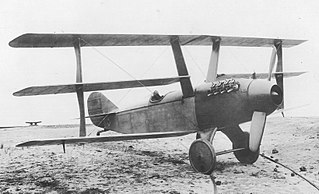
The Curtiss Model S was a single-seat fighter aircraft.
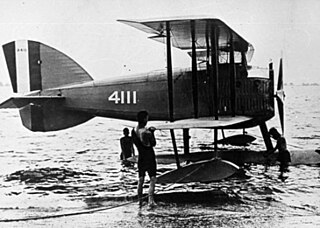
The Curtiss HA was an American biplane seaplane designed by Captain B.L. Smith of the United States Marine Corps, and built by Curtiss Aeroplane and Motor Company.

The Curtiss PN-1 was an American single-seat night fighter biplane built by Curtiss Aeroplane and Motor Company using blueprints from the Engineering Division of the United States Army Air Service.
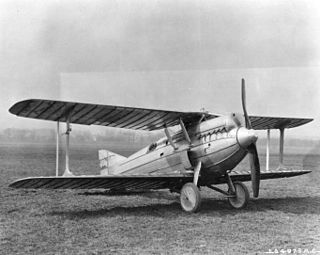
The Gallaudet PW-4 was a prototype biplane fighter aircraft built by the Gallaudet Aircraft Company. It was one of the last projects by the company before it was taken over by Consolidated Aircraft. It was all-metal and powered by a Packard 11A-1237 engine. Three prototypes were ordered by the USAAC, but the company could afford to build only one, which never flew.
The Loening XFL was a proposed carrier-based fighter aircraft to be built by Loening Aeronautical Engineering for the US Navy. It won a 1933 competition, but Loening was already busy building other aircraft, so the contract was canceled.
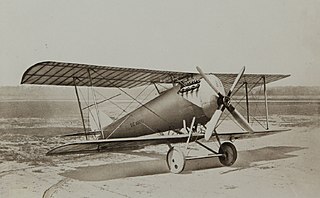
The Pomilio FVL-8 was a biplane fighter aircraft built by Fabbrica Aeroplani Ing. O. Pomilio for Engineering Division of the Aviation Section, U.S. Signal Corps.

The Orenco D was an American biplane fighter aircraft, designed by Orenco and built by Curtiss Aeroplane and Motor Company. It was the first fighter type of completely indigenous design to enter US military service.

The Port Victoria P.V.8 Eastchurch Kitten was a prototype British fighter aircraft of the First World War designed and built by the Port Victoria Marine Experimental Aircraft Depot on the Isle of Grain. It was a small and light biplane with a conventional wheeled undercarriage intended to operate from platforms on small ships, but while it had good handling, an unreliable and underpowered engine meant that the aircraft did not enter production, with only one prototype being completed. In 2014, a replica Kitten – originally started in the 1980s – was completed by enthusiasts at the Yorkshire Air Museum.

The Northrop XFT was an American prototype fighter aircraft of the 1930s. A single engined low-winged monoplane, it was designed and built to meet a United States Navy order for an advanced carrier based fighter. It exhibited poor handling, and was rejected by the Navy, the single prototype being lost in a crash. A variant, the Northrop 3A, also was unsuccessful.
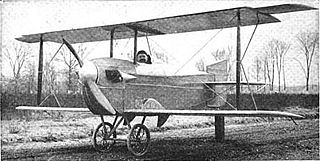
The J.V. Martin K.III Kitten, also known as the J.V. Martin K.III Scout, was marketed as an "altitude fighter" for the U.S. Army. It is considered the first aircraft in the United States with retractable landing gear.

The Vought V-141 was a prototype American single-seat fighter aircraft of the 1930s. It was a development of the unsuccessful Northrop 3-A design, but was itself a failure, being rejected by the United States Army Air Corps. The sole prototype was sold to the Japanese Army in 1937, but no production followed, with the type proving to be inferior to existing Japanese fighters.